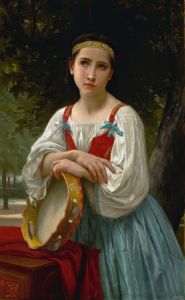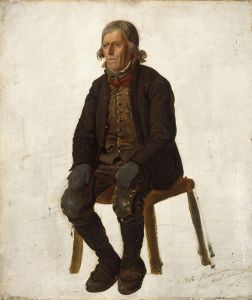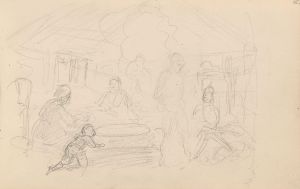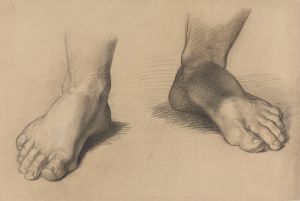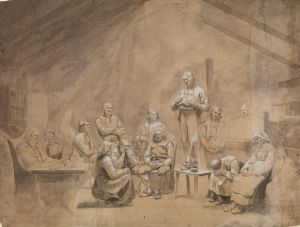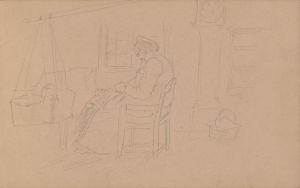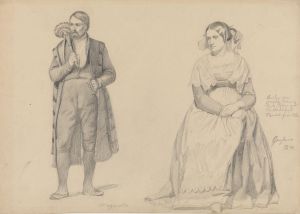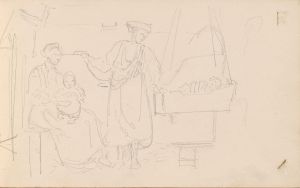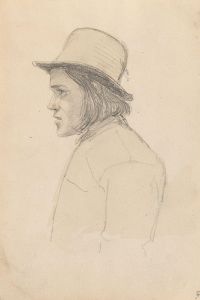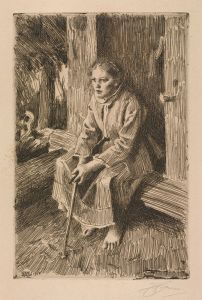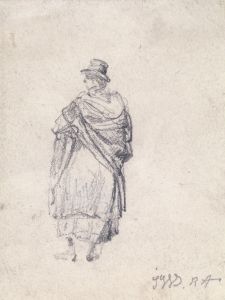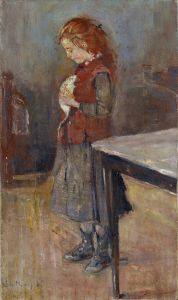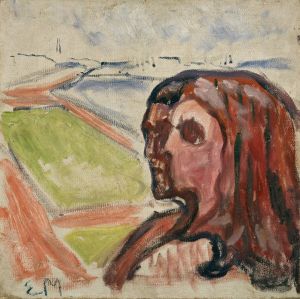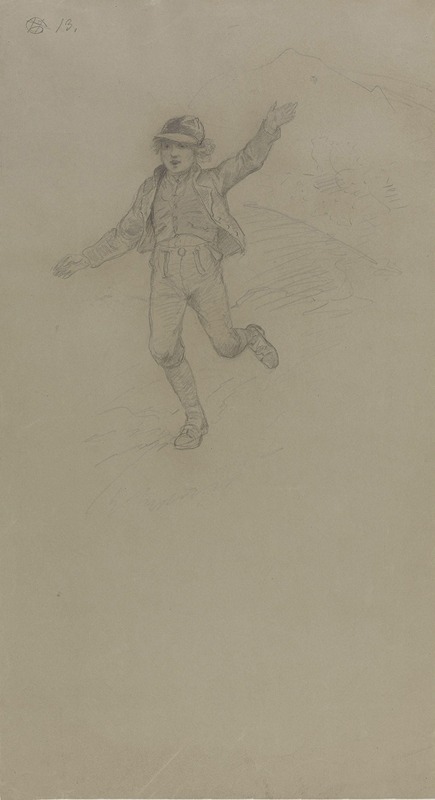
Løpende gutt
A hand-painted replica of Adolph Tidemand’s masterpiece Løpende gutt, meticulously crafted by professional artists to capture the true essence of the original. Each piece is created with museum-quality canvas and rare mineral pigments, carefully painted by experienced artists with delicate brushstrokes and rich, layered colors to perfectly recreate the texture of the original artwork. Unlike machine-printed reproductions, this hand-painted version brings the painting to life, infused with the artist’s emotions and skill in every stroke. Whether for personal collection or home decoration, it instantly elevates the artistic atmosphere of any space.
Adolph Tidemand was a prominent Norwegian painter known for his contribution to the national romantic movement in Norway during the 19th century. His works often depicted Norwegian rural life, traditions, and landscapes, capturing the essence of Norwegian culture and identity during a time of national awakening. One of his lesser-known works is "Løpende gutt," which translates to "Running Boy" in English.
"Løpende gutt" is a painting that exemplifies Tidemand's keen interest in portraying everyday life and the innocence of childhood within the Norwegian countryside. Although not as famous as some of his other works, such as "Haugianerne" or "Brudeferd i Hardanger," this painting still reflects Tidemand's characteristic style and thematic focus.
The painting depicts a young boy running through a rural landscape, capturing a moment of youthful exuberance and freedom. The background likely features elements typical of the Norwegian countryside, such as rolling hills, traditional wooden houses, or lush greenery, which are common in Tidemand's works. His attention to detail and ability to convey emotion through the depiction of simple, everyday scenes are evident in this piece.
Tidemand's work is often associated with the national romantic movement, which sought to establish a distinct Norwegian cultural identity during a time when Norway was in a union with Sweden. Artists like Tidemand played a crucial role in this cultural renaissance by highlighting traditional Norwegian customs, folklore, and rural life. Through his art, Tidemand contributed to a growing sense of national pride and cultural awareness.
While specific details about "Løpende gutt" are limited, the painting fits within Tidemand's broader oeuvre, which frequently focused on themes of childhood, rural life, and national identity. His paintings are characterized by their realistic style, attention to detail, and ability to capture the spirit of the Norwegian people and their environment.
Adolph Tidemand's influence extended beyond his paintings, as he was also a teacher and mentor to other artists. His works have been exhibited in various galleries and museums, both in Norway and internationally, contributing to his legacy as one of Norway's most important 19th-century painters.
In summary, "Løpende gutt" by Adolph Tidemand is a representation of the artist's dedication to capturing the essence of Norwegian rural life and the innocence of childhood. Although not as widely recognized as some of his other works, it remains a testament to Tidemand's skill and his role in the national romantic movement. His paintings continue to be celebrated for their cultural significance and artistic merit, offering a window into the life and landscape of 19th-century Norway.





